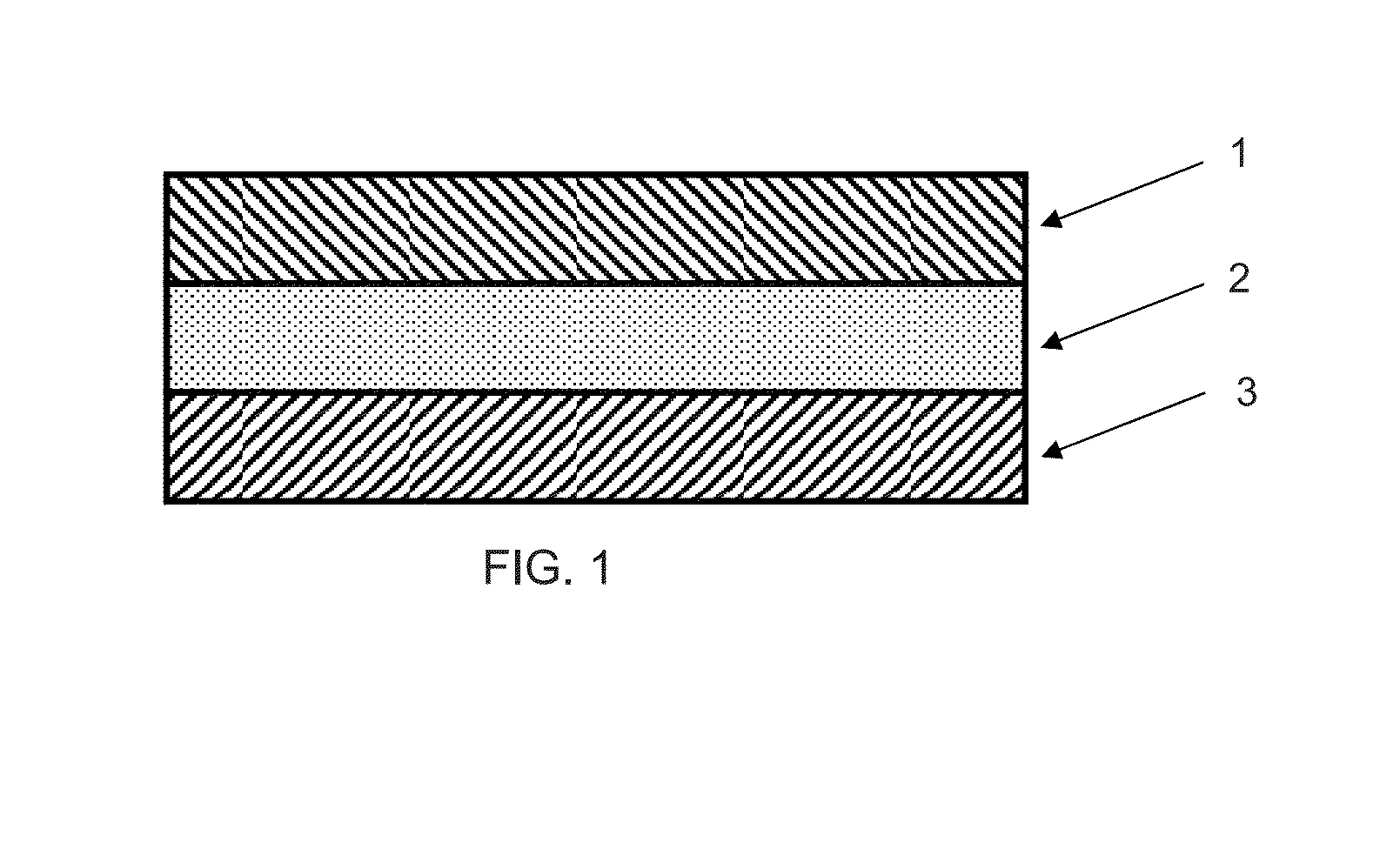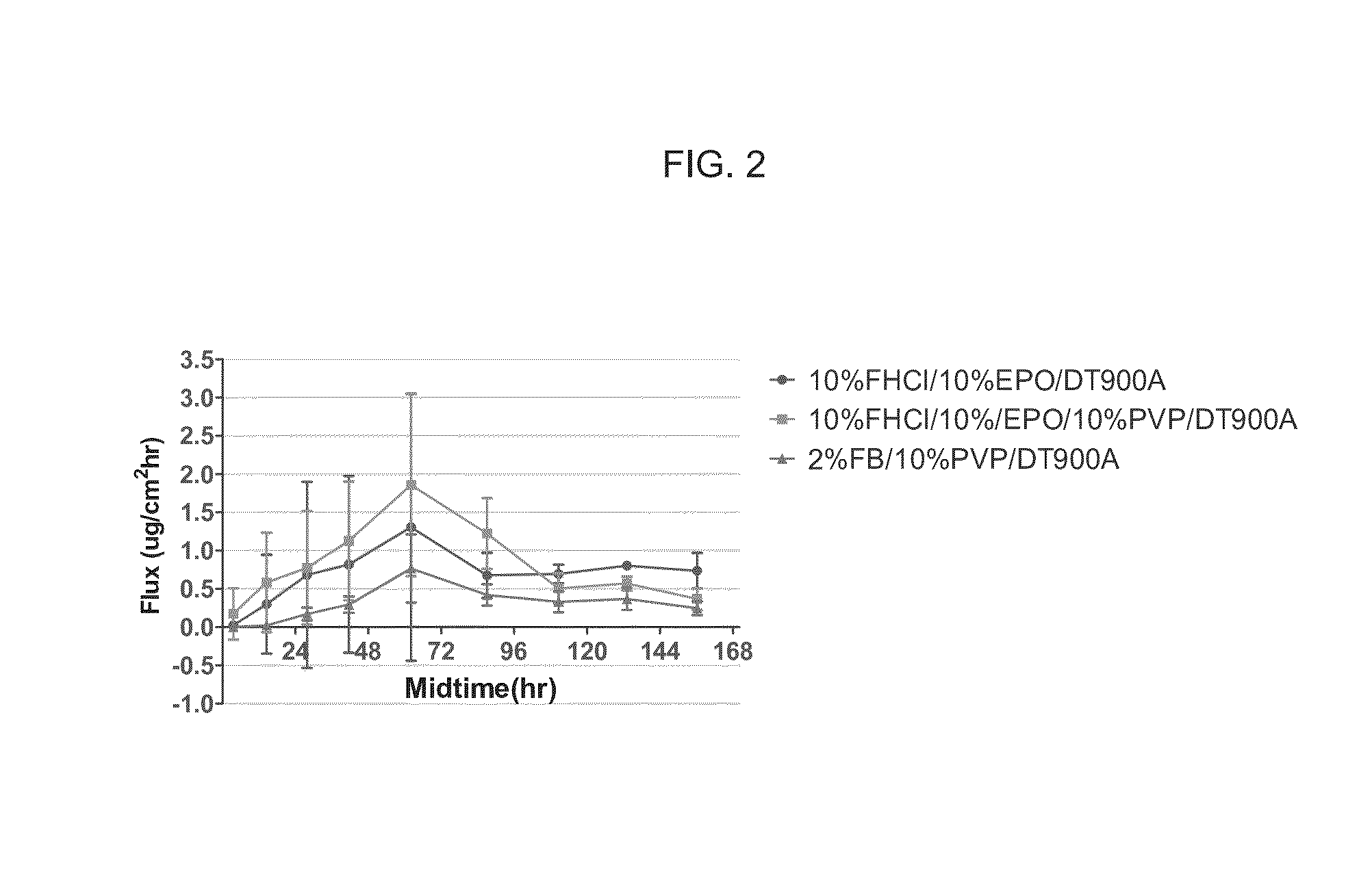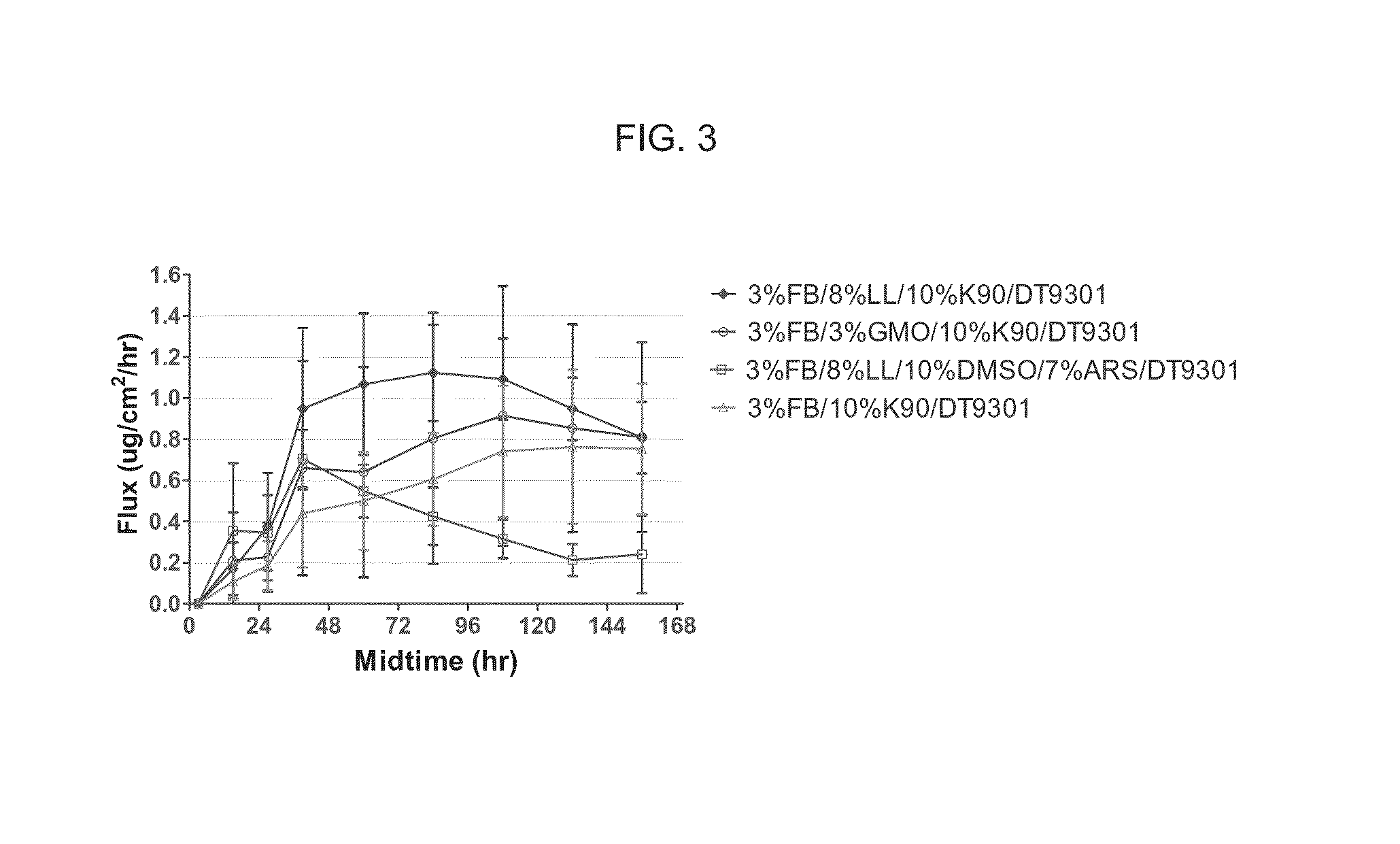Topical Sphingosine-1-Phosphate Receptor Agonist Formulations and Methods of Using the Same
- Summary
- Abstract
- Description
- Claims
- Application Information
AI Technical Summary
Benefits of technology
Problems solved by technology
Method used
Image
Examples
example 1
1. Gel Example 1
In-Vitro Permeation of Fingolimod Obtained from 1% Fingolimod Hydrochloride Gel
[0109]To evaluate fingolimod permeation through the skin, 1% fingolimod hydrochloride gel was made. HPMC was used to form the gel. The flux passing through the human cadaver skin was measured and the results are presented in FIGS. 5A and 5B.
example 2
2. Gel Example 2
In-Vitro Permeation of Fingolimod Obtained from 0.5% Fingolimod Hydrochloride Solution
[0110]The permeation of fingolimod from 0.5% fingolimod hydrochloride solution was also evaluated. The cumulative drug delivered amount and flux passing through the human cadaver skin was measured and the results are presented in FIGS. 6A and 6B.
example 3
3. Gel Example 3
In-Vitro Permeation of Fingolimod Obtained from 0.25%, 0.5%, 0.75%, 1% and 2% Fingolimod Hydrochloride Solution
[0111]The delivery of drug as a function of concentration was also evaluated. The flux through human cadaver skin was measured and the results are presented in FIGS. 7A and 7B. 0.25%, 0.5%, 0.75% and 1% fingolimod HCl showed similar cumulative drug delivered amount and fluxes of about 1-1.5 ug / cm2 / hr during the 24-48 hours of the experiment. 2% fingolimod HCl appears to have a higher flux compared to the other lower concentration samples.
C. Discussion
[0112]During the first 8 hours of the experiments, Fingolimod was not detected in the receptor solutions. The flux results indicate that the drug took a long time to first appear in the receptor solution. Fingolimod appears to be significantly bound to either the stratum corneum or the viable epidermis. This retards the appearance of the drug in the receiving phase. The binding of fingolimod to the skin could ge...
PUM
| Property | Measurement | Unit |
|---|---|---|
| Time | aaaaa | aaaaa |
| Time | aaaaa | aaaaa |
| Percent by mass | aaaaa | aaaaa |
Abstract
Description
Claims
Application Information
 Login to View More
Login to View More - R&D
- Intellectual Property
- Life Sciences
- Materials
- Tech Scout
- Unparalleled Data Quality
- Higher Quality Content
- 60% Fewer Hallucinations
Browse by: Latest US Patents, China's latest patents, Technical Efficacy Thesaurus, Application Domain, Technology Topic, Popular Technical Reports.
© 2025 PatSnap. All rights reserved.Legal|Privacy policy|Modern Slavery Act Transparency Statement|Sitemap|About US| Contact US: help@patsnap.com



